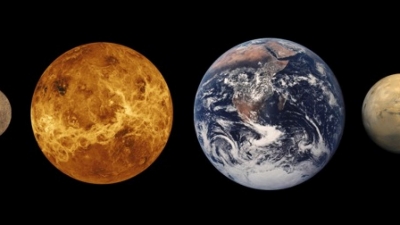
Of the terrestrial (rocky) planets of the inner solar system, neither Mercury nor Venus have any moons at all, Earth has one and Mars has its two small moons. In the outer solar system, the gas giants Jupiter and Saturn and the ice giants Uranus and Neptune have dozens of moons.
Jupiter’s menagerie of moons includes the largest in the solar system (Ganymede), an ocean moon (Europa) and a volcanic moon (Io). Many of Jupiter’s outer moons have highly elliptical orbits and orbit backwards (opposite to the spin of the planet). Saturn, Uranus and Neptune also have some irregular moons, which orbit far from their respective planets.
Saturn has two ocean moons – Enceladus and Titan. Both have subsurface oceans and Titan also has surface seas of lakes of ethane and methane. The chunks of ice and rock in Saturn’s rings (and the particles in the rings of the other outer planets) are not considered moons, yet embedded in Saturn’s rings are distinct moons or moonlets. These shepherd moons help keep the rings in line. Titan, the second largest in the solar system, is the only moon with a thick atmosphere.
In the realm of the ice giants, Uranus’s inner moons appear to be about half water ice and half rock. Miranda is the most unusual; its chopped-up appearance shows the scars of impacts of large rocky bodies.
Neptune’s moon Triton is as big as Pluto and orbits backwards compared with Neptune’s direction of rotation.
Credit : NASA Science
Picture Credit : Google




